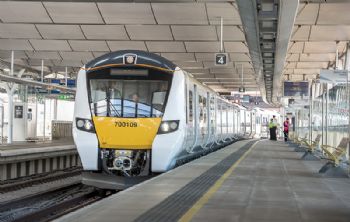
An automated driving mode for trains has been tested on a passenger service on Britain's mainline rail network for the first time.
When switched on, the Automatic Train Operation system on new Class 700 Thameslink trains removes control of acceleration and braking from the driver, thereby increasing the frequency of services, as trains will be able to run closer together.
After 18 months of testing, the new technology was used for the first time on a 9.46am service from Peterborough to Horsham.
From May, services running through central London on Thameslink will use the new system; by 2019, the frequency will increase from 14 trains per hour to 24, according to Govia Thameslink Railway.
The company’s engineering director, Gerry McFadden, said: “We are embracing digital technology to boost capacity through the heart of London — a historical bottleneck that has held back rail expansion across the South of the country.
“Self-drive technology also has great potential for the rest of the country’s rail network, particularly on congested routes, and it could reduce the need for costly infrastructure projects.”
The technology is part of the Government’s digital railway strategy and investment; it was developed by Siemens.
However, Mr McFadden says it will not eliminate the need for drivers: “We will always need a driver in the cab, but this technology allows us to run more trains, more frequently than we could by driving the trains manually; and for passengers, the trip will be as smooth as ever.”